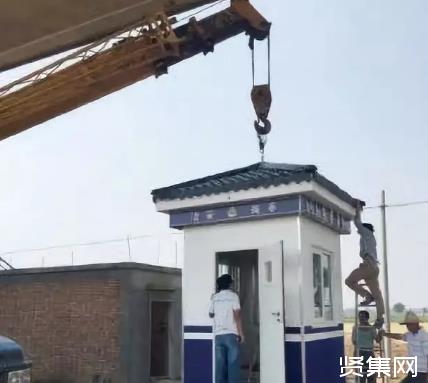Design, Production, And Construction Of Prefabricated Railway Buildings Based On Bim Technology
Prefabricated buildings use prefabricated components to operate like building blocks. At present, prefabricated prefabricated buildings are widely used in civil construction, especially residential buildings, and are still in the early stages of development in the railway industry. Railway section houses have the characteristics of a large number, unified design standards, and strong replicability, which are very conducive to prefabricated construction.
"BIM+prefabricated building" is conducive to leveraging the inherent advantages of the two concepts and promoting the development of railway buildings towards intelligence and informatization. It is necessary to conduct systematic and targeted research on the design and construction status of railway production and living houses, combined with the characteristics of the railway itself and production reality, for prefabricated buildings of railway houses.
At present, prefabricated buildings include prefabricated reinforced concrete structures, prefabricated steel structures, prefabricated container houses and other structural types. Among them, prefabricated container type machine rooms have been applied in the Wuhan Guangzhou high-speed railway, but due to issues such as moisture resistance and durability, the box type machine room has been abandoned after being used for a period of time. Prefabricated steel structures are widely used in railway platform canopies, maintenance garages, and other structures, but they are less commonly used in production and living buildings. In recent years, lightweight steel structures have been applied in small railway buildings, and assembled integral light steel structures have been used in railway security posts along the Shiji and Beijing Shenyang passenger lines, achieving good results in use.

Assembled integral security post
The Jingxiong Railway is currently actively promoting the construction of prefabricated pilot buildings, using prefabricated building light steel keel composite wall systems in small buildings such as communication base stations, and actively exploring the assembly of intelligent buildings. In terms of prefabricated concrete structures, Xinjiang Afuzhun Railway has adopted prefabricated concrete frame structures for station and some section houses on the basis of integrating production and living houses. The project is currently underway. In addition, prefabricated retaining walls, fences and other structures have also been applied in railway projects.
The research on prefabricated buildings in the railway industry started relatively late. Since 2014, China National Railway Group Co., Ltd. (formerly China Railway Corporation), various railway design institutes, and related research institutions have successively conducted special studies on prefabricated canopies, prefabricated retaining walls (pipe trenches), railway section prefabricated buildings, and quotas. Relevant research results have been obtained and a general reference map has been prepared. In 2018, China Railway Design Group Co., Ltd., China Railway Construction Electrification Bureau Group Co., Ltd., and other units jointly conducted specialized experimental research on the durability of prefabricated building light steel keel composite walls with China Academy of Railway Sciences Group Co., Ltd. However, research on railway prefabricated buildings and their intelligent buildings based on BIM technology has not yet been carried out.
Prefabricated Railway Buildings Based on BIM Technology
The core of prefabricated building is "integration", and BIM technology is a means of "integration", which can achieve the full process and professional integration application of prefabricated building. Taking railway section buildings as an example, this paper conducts relevant research on prefabricated buildings using BIM technology and its concepts, and explores the informatization and intelligence of their entire process.
design phase
Prefabricated architectural design is not only the separation and assembly of components, but also the integration and integration of multiple specialties. BIM technology can well meet the needs of various stages of design. The prerequisite for prefabricated construction of railway buildings is standardization, which requires the size of the buildings to meet the requirements of building modules. BIM technology establishes various forms of prefabricated components through family libraries, and can achieve modular standard design through various combinations and scheme comparisons. Due to the need for integration, prefabricated buildings involve multiple specialties such as architecture, structure, plumbing, and electrical systems. BIM technology can support collaborative design among multiple specialties at different stages through the constructed design platform. Prefabricated buildings emphasize integrated design, requiring consideration of various pipelines and holes embedded in prefabricated components such as wall panels. At the same time, prefabricated buildings require full decoration, advocating the concept of prefabricated decoration. BIM technology uses three-dimensional visualization to express pipelines, components, decoration, etc. in detail, conduct collision inspection and optimization, in order to achieve reasonable layout.
The advantages of BIM technology for prefabricated railway buildings are also reflected in the deepening design aspect. The deepening design model is created based on the construction drawing design model by adding or refining model elements, and deepening the design of main nodes, pipelines, embedded parts, components, connectors, etc. At the same time, non geometric information is entered into the model or linked to the model using the BIM data integration and management platform. By continuously enriching the model information, the BIM model is gradually improved, laying a good foundation for the subsequent production and installation of components.
Production stage
In the production process of prefabricated building components for railway buildings, the application of BIM technology is mainly reflected in the layout and pre-processing of components. The BIM model for prefabricated processing is based on the deepening design model. By formulating a process plan and associating it with the prefabricated processing model, material information, production batch information, component attributes, component diagrams, process technology, schedule cost information, quality inspection information, production responsibility entities, and other information are further supplemented during the prefabricated processing process. By directly extracting machining information from prefabricated machining models and using professional computer-aided software to generate relevant CNC process files, the layout of BIM models is achieved.
The specifications and standards of prefabricated building components are consistent, making it easy for factory production, while BIM provides a powerful technological carrier for the intelligent manufacturing of components. BIM technology, combined with information management methods such as the Sino BIM cloud platform, can unify the management of split components. Each component can be marked with a "one object, one code" through a QR code, and an infinite radio frequency chip (RFID) can be implanted to track the production, transportation, and other aspects of the component in real time (see Figure 7). This can achieve the goals of factory intelligent manufacturing, on-site intelligent assembly, energy conservation and environmental protection, green intelligent integration, and achieve the concept of full lifecycle management of engineering projects.
construction stage
BIM technology is mainly reflected in construction simulation during the construction phase. Taking the prefabricated building of the Jingxiong Railway as an example, by analyzing the construction process of prefabricated buildings, virtual construction technology is used to simulate key technologies such as site layout, component lifting, and node connection of prefabricated buildings. At the same time, by comparing the use of different software and plugins, as well as analyzing the different implementation methods during the operation process, we will explore the modeling process, collision detection, construction progress simulation, roaming production, and other aspects of virtual construction. Under the conditions of economic and practical feasibility, we will complete the simulation of virtual construction of prefabricated buildings. BIM can provide effective software and technical support for the full process virtual construction simulation of prefabricated buildings, and provide practical reference basis for prefabricated building construction. It has guiding significance for on-site construction, can effectively avoid waste, and can grasp the key and difficult points in the construction process in advance, providing a basis for high-quality and efficient construction.

Assembly diagram of prefabricated buildings based on BIM
Related suggestions
There has been some progress in the research and application of prefabricated railway buildings, but due to the characteristics of railway buildings themselves, there are still various constraints in terms of component performance, installation and construction, and cost quotas, which limit the large-scale application of prefabricated buildings. Looking ahead to the development of prefabricated railway buildings, further research and improvement can be carried out from the following aspects:
There are many types of railway buildings, involving various specialties, diverse process requirements, and different building sizes, plans, and specifications. Therefore, there are many types of prefabricated components, and standardized and factory production is difficult and costly. Therefore, BIM technology can be used to conduct research on house integration. Under the premise of meeting the requirements of the process profession, various types of houses can be integrated and merged through the comparison of BIM model schemes, with unified planning and layout and reserved development conditions, improving the standardization of houses, forming modular components, achieving industrialization of production, and reducing overall costs.
The specifications and technical standards related to prefabricated construction of railway buildings are not yet perfect, such as prefabricated rate and assembly rate, evaluation level, acceptance standards, etc. At present, the "Evaluation Standards for Prefabricated Buildings" stipulate the calculation and evaluation level of assembly rate, and specific calculation rules for assembly rate and prefabrication rate are formulated by various regions based on actual situations. However, there is no clear calculation rule for assembly rate and prefabrication rate in the railway industry. The lack of process control standards and process standards in the construction process of railway prefabricated buildings, as well as certain deficiencies in the current quality acceptance standards for prefabricated structures, have to some extent limited the promotion of prefabricated buildings. In addition, there is a lack of unified application guidelines for BIM technology in railway buildings, and there are no unified standards for model information depth, accuracy, and outcome files, which to some extent limits the integration application of "BIM+prefabricated buildings".
At present, the level of design integration and assembly intelligence in prefabricated railway buildings is not high. In architectural design and component separation, only the design of pipelines and holes is considered, and integrated design such as intelligent monitoring, full building decoration, and integrated kitchen and bathroom have not been comprehensively considered. During the production and installation process, intelligent construction and information management are also in the initial exploration stage. Therefore, the intelligent research of prefabricated buildings should vigorously develop a BIM information management platform suitable for railway buildings on the basis of existing achievements, with the industrial chain as the main line. Through real-time collection of quality data throughout the entire life cycle, such as project approval, design, production process of building materials and components, transportation process, construction and assembly process, supervision and acceptance, and operation process, the traceability of building quality can be achieved, which is conducive to information sharing and exchange between upstream and downstream enterprises and internal enterprises, and realizes information management of production and construction.
Accelerate the research on the quota and economic feasibility of prefabricated railway buildings. At present, prefabricated buildings lack corresponding railway quotas and have high costs. The investment in prefabricated concrete structures increases by 20% to 35% compared to cast-in-place concrete structures, which is also one of the main factors restricting the application of prefabricated buildings in railway buildings. The quota and cost of prefabricated railway buildings should comprehensively consider various factors such as engineering quantity scale, modular degree of components, construction environment, transportation conditions, transportation distance, etc., and calculate design costs, production and transportation costs, lifting and installation costs, etc. In the next step of work, the advantages of BIM technology in engineering quantity statistics, production material control, and other aspects can be utilized to deeply compare the self construction and self production of prefabricated components with the procurement in the civilian market, determine a reasonable construction distance and procurement mode, and achieve the economic rationality of railway prefabricated buildings.
On the basis of BIM technology, combined with EPC mode, carry out research on design construction integration and product industrialization. The combination of EPC mode and prefabricated building technology has obvious advantages in project organization structure, design optimization and resource integration, schedule control, cost control, and professional management. It can be combined with the currently implemented railway EPC project to carry out research on integrated collaborative control of design processing assembly of prefabricated buildings. At the same time, research will be conducted on fully assembled integrated buildings for small-scale production and living houses on railways, in order to form product industrialization and achieve good economic benefits.
Due to the advantages of green environmental protection, time-saving, low management costs, and high construction quality of prefabricated buildings, as well as the strong support of national policies in recent years, prefabricated buildings have good development prospects in railway buildings. BIM technology provides a strong carrier and technical support for prefabricated buildings. Emphasis should be placed on conducting in-depth research in areas such as standardization and modularization of buildings, deep integration of prefabricated buildings and BIM technology, and integration of design and construction, in order to address prominent issues in the design and construction of prefabricated buildings, promote the industrialization and industrialization of railway production and living buildings, and advance the development of intelligent railways.
China Railway Design Group Co., Ltd. (a member unit of the Railway BIM Alliance)
Zhao Zhenli, Yang Bin, Mi Hongguang, Zhang Lunlun, Bao Chunlong
Research on Prefabricated Railway Buildings Based on BIM Technology [J]. Innovation in Railway Technology
Source: Railway BIM Alliance Article
Note: All accompanying images in the article are reposted online. Any infringement will result in deletion! Return to Xianji website to see more
Original link: https://www.xianjichina.com/news/details_189867.html
Source: Xianji.com
The copyright belongs to the author. For commercial reprints, please contact the author for authorization. For non commercial reprints, please indicate the source.
Main content sources:


